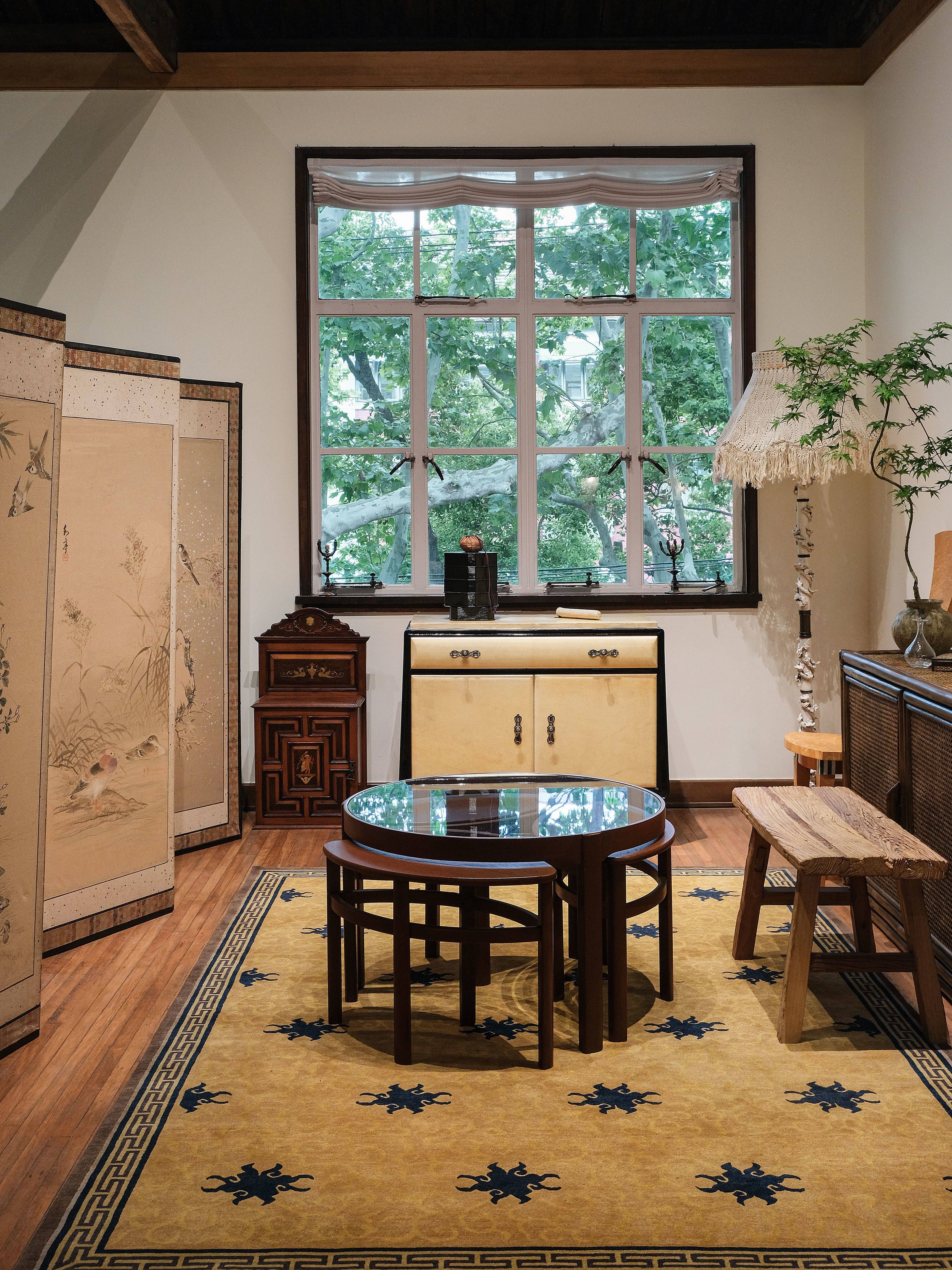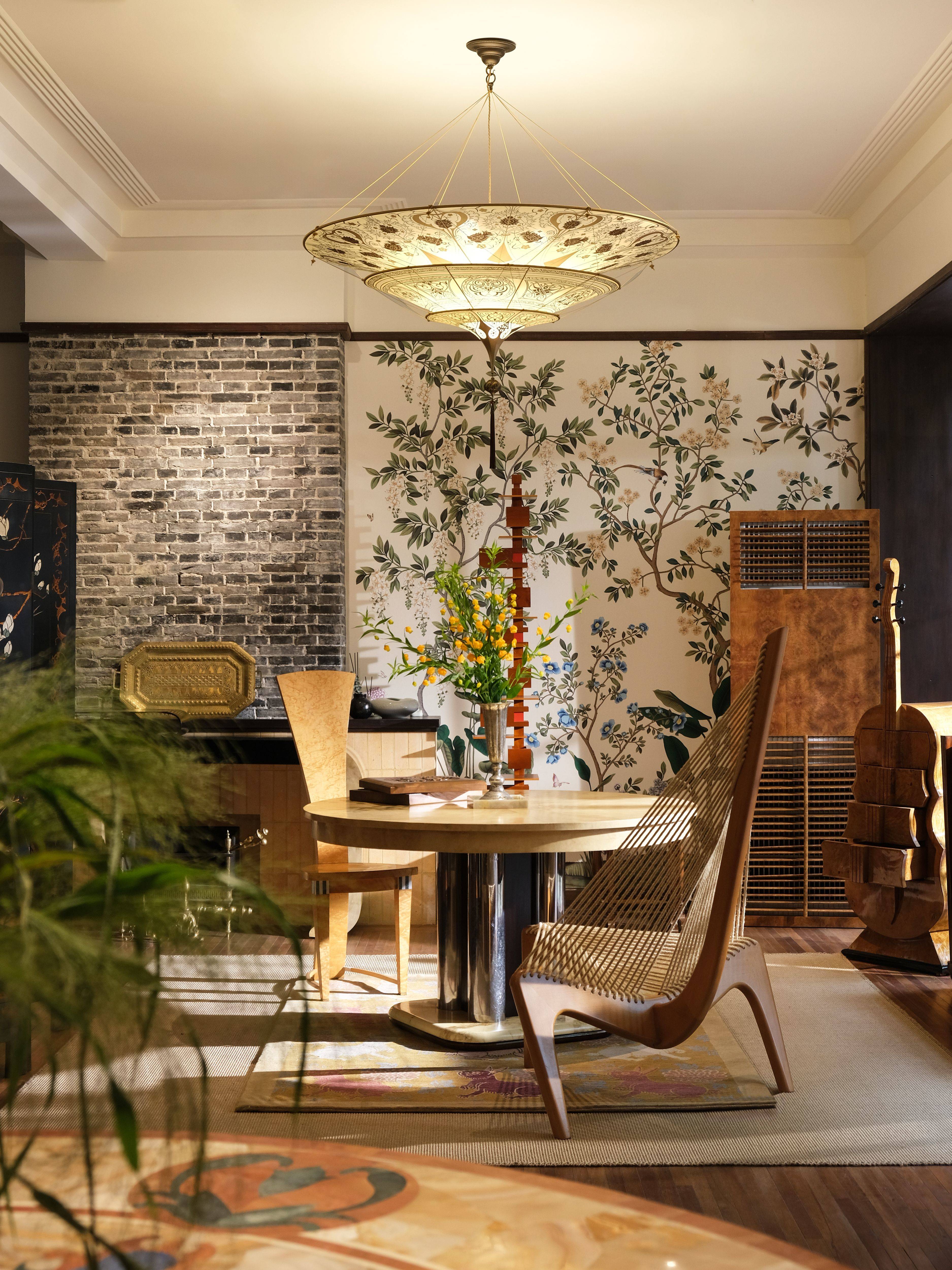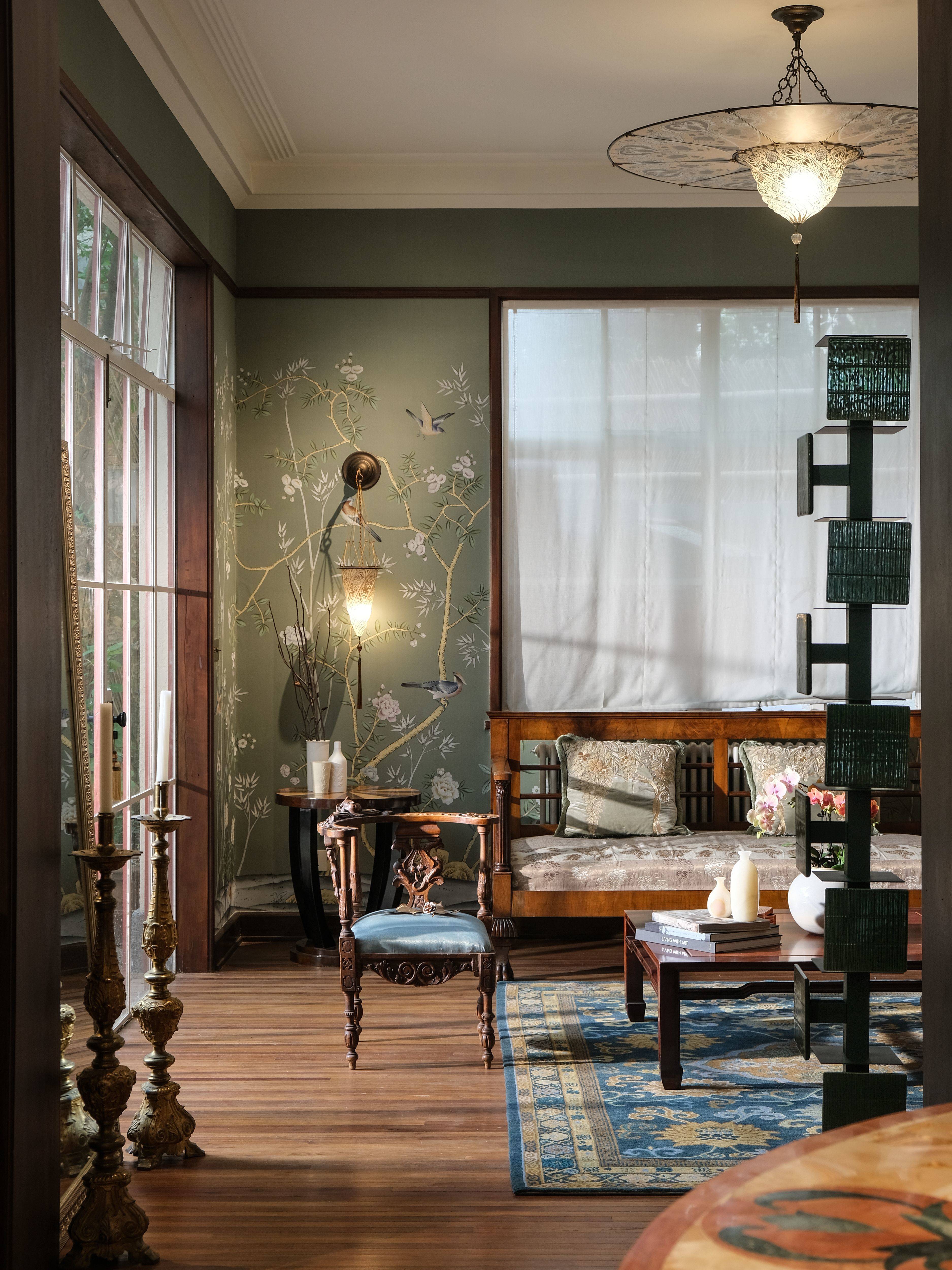Marking the centennial of the birth of ART DECO, AMBELIE collaborates with CHANGPHEL to present a dialogue between Art Deco-style furniture and Tibetan handwoven carpets.
The exhibition showcases iconic Art Deco furniture from Italy and France, paired with handwoven wool carpets from northern Tibet. Through the interplay of materials, lines, and symbolic motifs, this showcase reimagines a cross-temporal and spatial aesthetic conversation.
"ARTDECO", a revolution of "Decorative Art" that began in Paris in 1925, used sharp, radiating geometric lines, pyramid-shaped steps and exotic patterns to weave the romance of the mechanical age into the steel and concrete, shaping one of the most extravagant faces of modern aesthetics. It shimmers at the sharp corners of skyscrapers and flows through the facets of dazzling jewelry, embodying both the coldness of mechanicalism and industrial rationality and the romantic fever of indulging in the imagination of Egypt, Maya and the Orient. Shanghai, as one of the most international cities in the East, became the first stop for ARTDECO in China. "Modern", is the new name of the hybrid child of Western modern aesthetics and Eastern traditional civilization. From the century-old buildings lined up along the Bund to the window frame details seen everywhere on the streets, we can still find traces of ARTDECO in every corner of this city. On the 100th anniversary of the birth of Decorative Art, AMBELIE GALLERY, in collaboration with the Tibetan carpet brand Changphel, presents a dialogue between Art Deco-style vintage furniture and Tibetan hand-woven carpets. The exhibition selects classic Art Deco furniture from Italy and France, paired with pure hand-woven Tibetan wool carpets. Through the collision of materials, lines and symbols, it reconstructs this aesthetic dialogue that transcends time and space, with the coldness of geometry colliding with the warmth of handcraft, and the precision of industry conversing with the chaos of nature. In the world of ARTDECO, "new materials" and "new techniques" are particularly important pursuits: the parchment used in ancient Greece and Rome to copy ancient books becomes a delicate and smooth furniture surface, with the texture of the nude color faintly visible in the depth of the black lacquer, as if the ghost of a medieval manuscript still wanders on its surface. The curved wood pillars are as slender as musical score lines, and the neat geometric patterns are painted with lacquer as ink, transforming the writing medium of ancient Greece and Rome into a luxurious symbol of Decorative Art; the inlaid stone technique favored by the Medici family during the Renaissance is combined with fine woodworking, with the flowing texture like clouds and mist supporting abstract geometric patterns, and the inverted cone-shaped legs like a corner of a classical building; irregular wooden blocks are stacked in a brutalist style like Le Corbusier, with the base held up by Carrara marble that has been carved with the Pantheon of ancient Rome. Corresponding to this, are the divine patterns that leap in the hand-woven Tibetan carpets of Changphel. The "Tiger Carpet" abstracts the stripes of the fierce beast into geometric color blocks, with the playfulness and majesty wrestling in the warp and weft of the Tibetan wool; homophonic with "Fu" (good fortune), the tiger carpet becomes a talisman to ward off evil and bring peace to the space; the "Dragon God" is like a dragon robe crowning the ground, different from the complex embroidery of scales on silk fabrics, the hand-woven craftsmanship and the texture of wool add a touch of the coldness of the plateau; the "Jade Rabbit with Mushrooms" adds a touch of agility and freshness to the Tibetan carpet with the jade rabbit and the entwined branches... "Beauty is what remains standing after the erosion of time." The opening words of AMBELIE, and the declaration of Changphel, "The distant mountains are in sight, and we rush towards them," reach a tacit understanding in the exhibition hall at this moment. The rough texture of Italian walnut wood reflects the auspicious clouds on the Tibetan carpets, and the leaves of the French oak carvings overlap with the geometric patterns of the tiger carpets - ART DECO is never a cold style specimen, but a living, breathing, and constantly reborn aesthetic gene. It bloomed at the 1925 Paris Exposition, solidified at the spires of the skyscrapers along the Bund in Shanghai, and now, through the angles of vintage furniture and the warp and weft of Tibetan carpets, it quietly revives in the texture of contemporary life. This exhibition may be a key, unlocking not only the memories of the golden age of ARTDECO, but also the eternal question of "how beauty transcends time and space".


